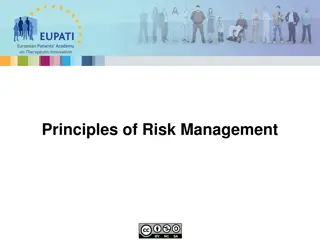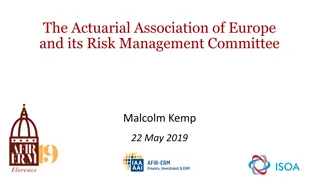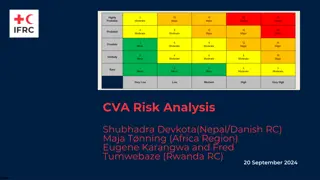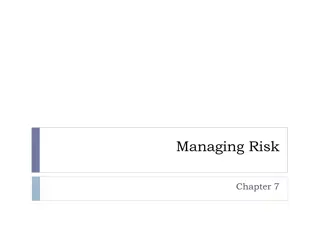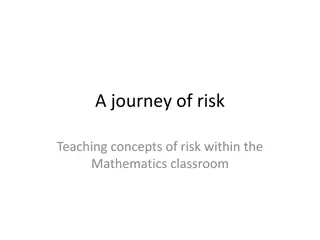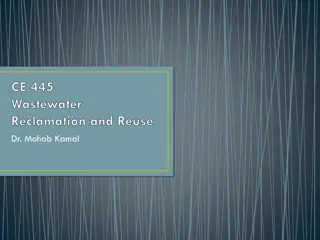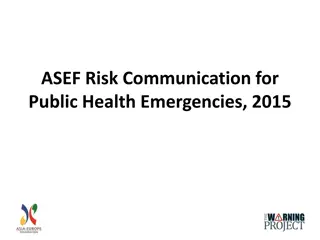Risk Communication and Management in Health
Risk communication is a crucial aspect of effective public health management, involving a two-way exchange of information to enhance understanding and decision-making. This involves identifying hazards, assessing risks, and implementing communication strategies to address various types of risks. The importance of clear messaging and engaging key audiences is emphasized to mitigate potential health threats. Understanding the disconnect between scientific facts and public perceptions is vital for bridging gaps in risk communication strategies.
Download Presentation

Please find below an Image/Link to download the presentation.
The content on the website is provided AS IS for your information and personal use only. It may not be sold, licensed, or shared on other websites without obtaining consent from the author. Download presentation by click this link. If you encounter any issues during the download, it is possible that the publisher has removed the file from their server.
E N D
Presentation Transcript
GENDER, ONE HEALTH AND INFECTIOUS DISEASE MANAGEMENT R I S K C O M M U N I C A T I O N A N D E L E V A T O R P I T C H E S P O W E R P O I N T N O . 9
LEARNING OBJECTIVES Introduce risk communication Introduce risk communication best practices Practice key message development Practice risk communication skills through examples
. Risk communication is an open, two-way exchange of information and opinion about risk that leads to better understanding and better risk management decisions by all involved.
RISK ANALYSIS PARADIGM Everything we do involves risk Zero risk is unachievable Options exist for managing every risk
RISK ANALYSIS PARADIGM 1. Risk Assessment: Hazards are identified Risks are determined Risk Risk Management Assessment 2. Risk Management: Options are identified Best option chosen and implemented Risk Communication 3.Risk Communication: Open exchange of information resulting in better decisions about risk and its management
4 TYPES OF RISK COMMUNICATIONS! Crisis High Outrage Management Communication Outrage Public Relations Precaution Advocacy Low High Danger (Hazard) Peter Sandman http://www.psandman.c om/
SUMMARY Risk communication & risk analysis paradigm Our perception of risk is a combination of facts (objective) and emotion (subjective). Appreciate the disconnect between science and public perceptions of risk.
APPLIED QUESTION #1 THINK, PAIR, SHARE Moldy maize meal has been put into animal feed. This can cause Aflatoxicosis, a fungal intoxication that will damage the liver. Once the animal shows clinical signs such as poor appetite and jaundice, treatment may not help. Who are the most important audiences to communicate this danger / risk to? What communication methods will you use?
GOALS OF RISK COMMUNICATION Decrease outrage! Take into account emotional response to event. Trust - one of the most important factors in determining the effectiveness of risk communication Empower audiences to make informed decisions. Discourage negative behavior. Encourage constructive responses to risk or danger.
Older Risk Communication Information flow in one direction, or the we tell them approach. Contemporary Risk Communication Risk communication is multi-directional and actively involves audience as partners.
RISK COMMUNICATION BEST PRACTICES (1) Remember communication is a two way street. Listen to your audience and seek understanding. Communicate with empathy and concern. Don t assume. Be aware of cultural and language differences.
RISK COMMUNICATION BEST PRACTICES (2) Use appropriate terminology Accept uncertainty Use key messages Provide resources for more information Foster partnerships Remain accessible
MYTHS! Communicating risk is more likely to harm people than calm them.
MYTHS! Communicating risk is more likely to harm people than calm them.
MYTHS! Communication is less important than education if people knew the true risks they would accept them.
MYTHS! Communication is less important than education if people knew the true risks they would accept them.
MYTHS! Issues arising in crisis are too difficult for the public to understand, so it is better to say nothing or just tell them what to do.
MYTHS! Issues arising in crisis are too difficult for the public to understand, so it is better to say nothing or just tell them what to do.
MYTHS! Risk communication is someone else s job / problem.
MYTHS! Risk communication is someone else s job / problem.
SUMMARY Risk communication is an open, two-way exchange of information and opinion about risk which leads to better understanding and better risk management decisions. Using risk communication best practices can help manage risks better.
APPLIED QUESTION #1 THINK, PAIR, SHARE You are spokesperson for the National Rift Valley Fever Taskforce leading government response to an outbreak in wildlife in a national park. Following the initial press release about the outbreak you are miss-quoted in international media - miss-information which may cause undue concern or alarm (outrage!). As a spokesperson, how should you address inconsistent messages about the outbreak?
REDUCING OUTRAGE Do not wait until all the answers are in! Communicate what you know. what you don t know. what you are doing to address the situation.
GOAL: ACKNOWLEDGE HAZARD, VALIDATE CONCERN, GIVE INDIVIDUALS WAYS TO RESPOND Crisis/ Emergency Communication High Outrage Management Outrage Public Relations Precaution Advocacy Danger (Hazard) Low High
POLISHING YOUR ELEVATOR PITCH For use when you only have a minute or two with a key stakeholder!
11/17/2024 28 WHAT DOES ELEVATOR PITCH MEAN? The expression refers to https://encrypted-tbn0.gstatic.com/images?q=tbn:ANd9GcSsZwNngJUENzPI4wPw_5NSuS7x90wzQzAS8vZ1JHcS3HqMW7dwcg those short communication opportunities that emerge unexpectedly, such as when you find yourself on an elevator with someone you want to influence!
11/17/2024 29 KEYS TO A GOOD ELEVATOR PITCH 1. Keep it short (the fewer words the better). 2. Make it catchy (to capture their attention). 3. Use memorable phrases. 4. Focus on 3 key messages. 5. Wrap it up with a punch line!
11/17/2024 30 EXAMPLE Thank you Mr/Mrs/Doctor xxx, your support inspired us to do more to help our country. The training you supported significantly improved our ability to respond to new diseases. Ten more teams of medical doctors, nurses, veterinarians and wildlife specialist now stand ready to react as soon as a deadly disease occurs. Please keep pushing us so we can get even better!
. Risk communication is an open, two-way exchange of information and opinion about risk that leads to better understanding and better risk management decisions by all involved.









